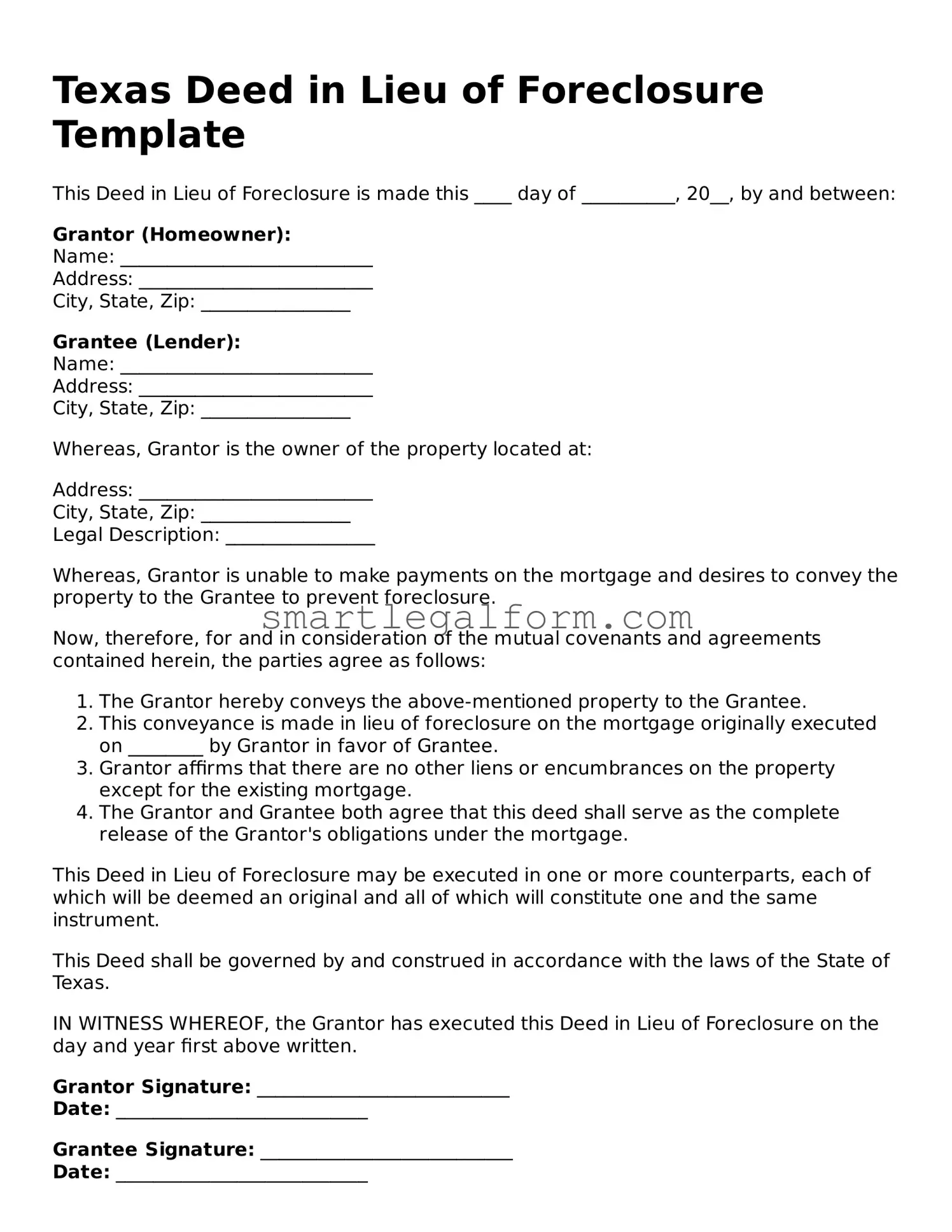Texas Deed in Lieu of Foreclosure Template
This Deed in Lieu of Foreclosure is made this ____ day of __________, 20__, by and between:
Grantor (Homeowner):
Name: ___________________________
Address: _________________________
City, State, Zip: ________________
Grantee (Lender):
Name: ___________________________
Address: _________________________
City, State, Zip: ________________
Whereas, Grantor is the owner of the property located at:
Address: _________________________
City, State, Zip: ________________
Legal Description: ________________
Whereas, Grantor is unable to make payments on the mortgage and desires to convey the property to the Grantee to prevent foreclosure.
Now, therefore, for and in consideration of the mutual covenants and agreements contained herein, the parties agree as follows:
- The Grantor hereby conveys the above-mentioned property to the Grantee.
- This conveyance is made in lieu of foreclosure on the mortgage originally executed on ________ by Grantor in favor of Grantee.
- Grantor affirms that there are no other liens or encumbrances on the property except for the existing mortgage.
- The Grantor and Grantee both agree that this deed shall serve as the complete release of the Grantor's obligations under the mortgage.
This Deed in Lieu of Foreclosure may be executed in one or more counterparts, each of which will be deemed an original and all of which will constitute one and the same instrument.
This Deed shall be governed by and construed in accordance with the laws of the State of Texas.
IN WITNESS WHEREOF, the Grantor has executed this Deed in Lieu of Foreclosure on the day and year first above written.
Grantor Signature: ___________________________
Date: ___________________________
Grantee Signature: ___________________________
Date: ___________________________
